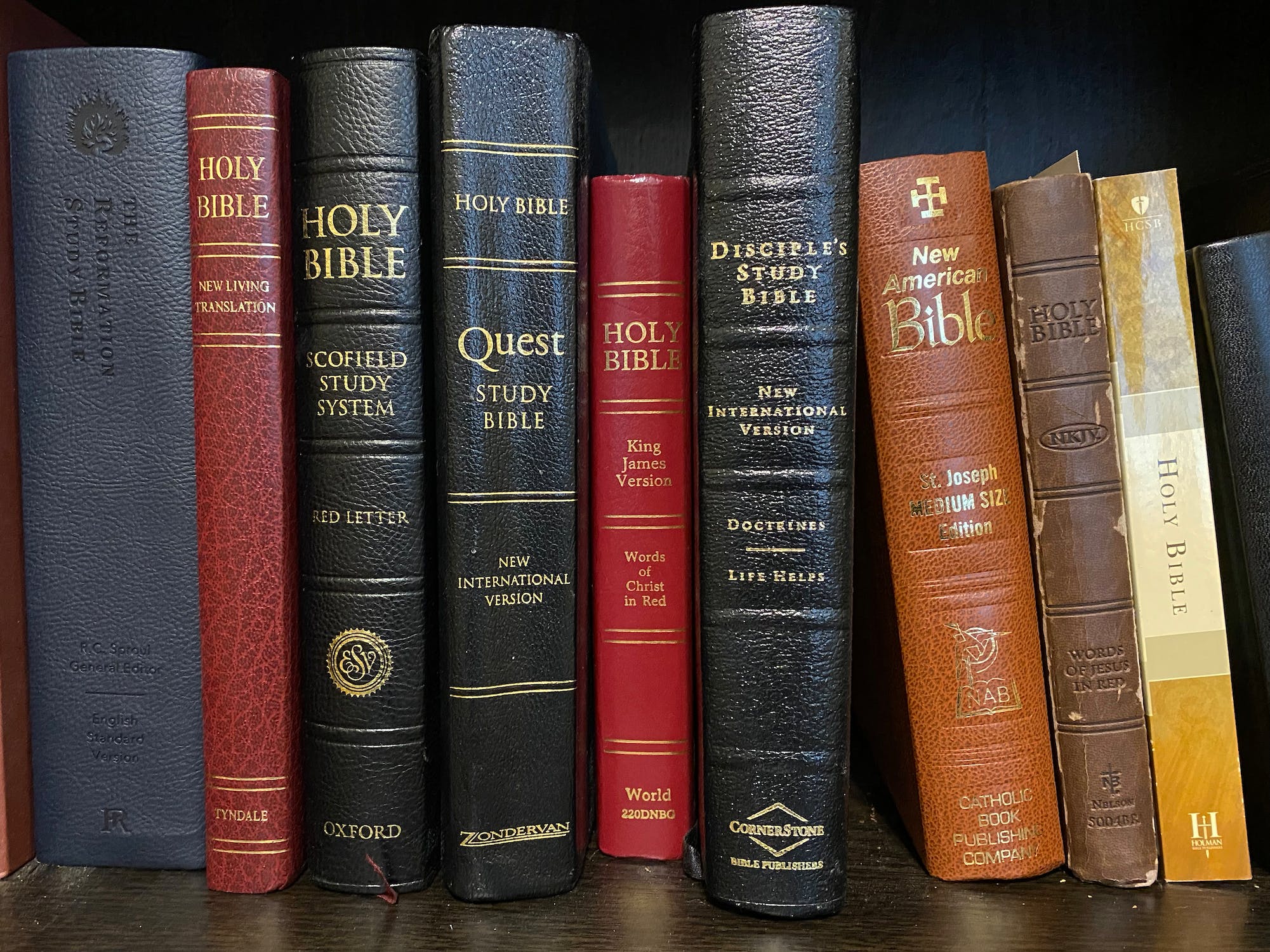Why Are There So Many English Translations?

In a previous article we discussed how God used men to translate the Bible into English from the original texts. Today there are over 60 translations on the Bible study site biblegateway.com. Why are there so many different translations? Shouldn’t a single translation be enough? We will discuss a few issues that arise when translating the Bible and then we will discuss different translation types.
First, we must remember there is not a single original document in Hebrew and Greek for each book that translators can use to create a translation. There are thousands of manuscripts that exist that form a small number of complete Hebrew and Greek versions of the Bible. Scholars disagree on which versions are the most reliable ones, so as a result, different English translations are created.
Next, we must remember that the grammar and rules of English, Hebrew, and Greek are different from each other. If the languages had the same number of words and each word could only be translated one way, then translating the text would be simple. But this is not the case. The mechanics of languages differ; there are different figures of speech, words that are not in both languages, different ordering of words, and so on. This leads to different ways of translating a word or phrase.
The final thing we will consider is that there are different translation philosophies or types, ranging from literal to paraphrase. Each translation will have a different goal for their translation. We will discuss the three broad categories of translation: formal equivalence, dynamic equivalence, and paraphrase.
Formal Equivalence/Essentially Literal
Since a literal word-for-word translation is not possible, formal equivalence or essentially literal translations are those that seek to be as literal as possible to the source text while making the translation readable. All translations require some interpretation, but an essentially translation minimizes attempting to interpret the text to the reader. This can result in some passages that are ambiguous or open-ended; however, the benefit is that the reader can be guided by the Holy Spirit to understand the meaning of the text.
Examples of essentially literal translations are the King James Version (KJV), English Standard Version (ESV) and New American Standard Bible (NASB).
Dynamic Equivalence/Thought-for-Thought
A dynamic equivalence translation attempts to be as literal as possible but will translate passages with difficult or ambiguous meanings with a “thought-for-thought” translation. The translators will first interpret what the source text means, then translate what they believe is the thought of the passage, not the text itself. This requires the translators to do more interpretation than in an essentially literal translation.
This is easier to show than to define. In the ESV, 2 Corinthians 5:14 is translated, “For the love of Christ controls us…” The Greek behind this phrase could mean the love Christ has for us, the love we have for Christ, or both. All are possible and in the ESV it is up to the reader to interpret. In the New International Version – the post popular dynamic equivalent translation – it is translated, “For Christ’s love compels us…” The meaning may or may not be correct, but the NIV has made the interpretive decision, believing that is what Paul’s thought was when he wrote it. [1]
Examples of dynamic equivalence are the NIV mentioned above, New Living Translation (NLT) and Christian Standard Bible (CSB).
Paraphrase
A paraphrase is as far as possible from a literal translation of the Bible. In a paraphrase, the translator will typically summarize several verses or passages into a thought. While dynamic equivalence translations may have large sections of formal equivalence, a paraphrase is only a thought-for-thought translation. Paraphrases often use modern idioms and slang whereas dynamic equivalence translations will typically refrain from using them. The goal for paraphrase translations is to attempt to make the language modern and easier to understand.
Examples of paraphrases are The Message (MSG), The Living Bible (LB) and The Voice.
What Is Best?
As is usually the case, the answer for “what is best” is “it depends.” Most widely available English translations do not contain heretical or questionable translations. God has blessed us today with the availability of multiple translations available online so that we can read which translation is easiest for us to understand. Since “all Scripture is breathed out by God and profitable for teaching, for reproof, for correction, and for training in righteousness (2 Timothy 3:16),” the important thing is to be devoted to studying and understanding who God is through His revealed word.
DeYoung, Kevin (2011), Why Our Church Switched to the ESV. Wheaton, IL: Crossway ↩︎
